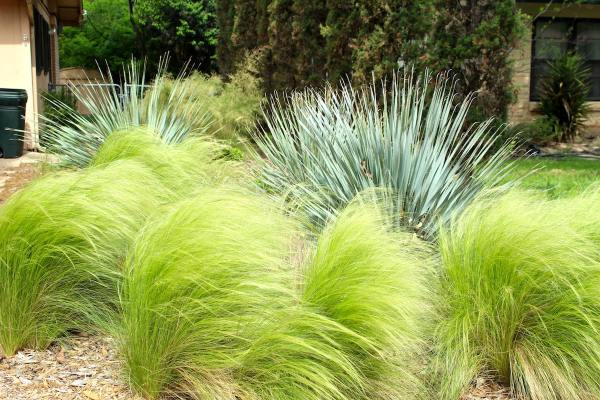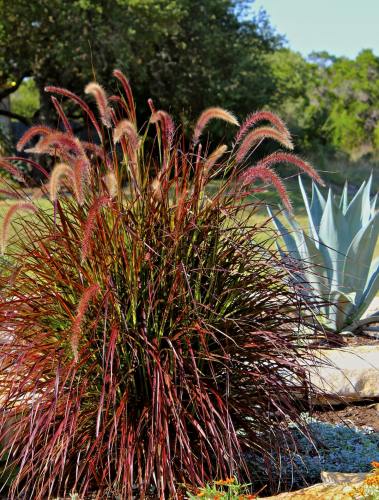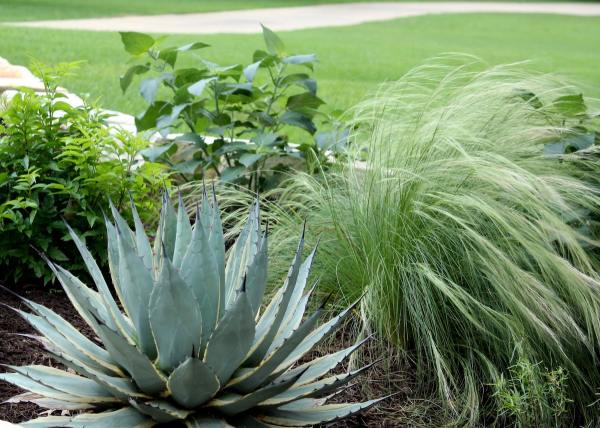Creating a new garden and dog-friendly landscape
We moved in June, and left behind the garden I built over 16 years. I feel like I’ve left behind so many dear friends and labors of love.
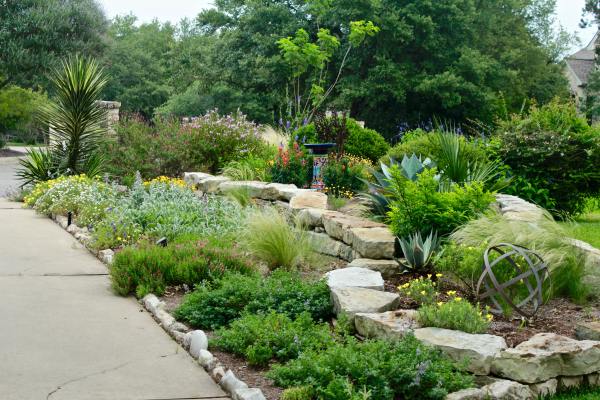 I have moved on, as the new garden really needs me desperately. The new owners of my garden have asked for my help in getting to the know the garden and how to care for it. And, they’ve been very generous about my collecting some seeds and a few volunteers as well. I look forward to teaching them to care for all my plant children.
I have moved on, as the new garden really needs me desperately. The new owners of my garden have asked for my help in getting to the know the garden and how to care for it. And, they’ve been very generous about my collecting some seeds and a few volunteers as well. I look forward to teaching them to care for all my plant children.
So, the new house. The new old house. Ivy, actually, three kinds of ivy – English, Jasmine and Virginia creeper, have eaten the entire large, corner lot, and are now trying to eat the house and all of the beautiful live and red oak trees. Ugh. And because I need to keep a little of it, eradication is going to be labor-intensive to say the least.
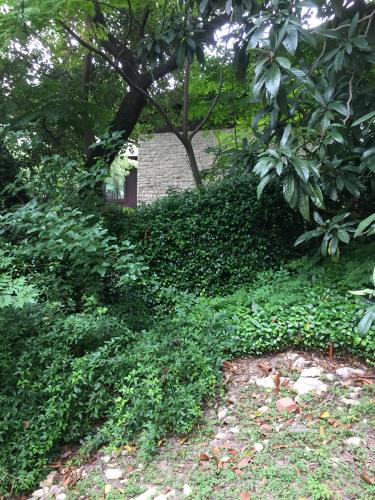
In the back, there was a tiny square of what I believe may have once been grass. But, it was sad – invaded by ivy, a half dozen volunteer trash trees and a small circle of weeds, it was a poor excuse for a yard for the boys. So, the first step was to clear the trash trees, dig out the ivy and the primrose jasmine, and open the chain link fence to install a gate to the next grass-creating project.
Dog inspection was critical to the leveling and retaining wall work and they were eager to check out their new space.
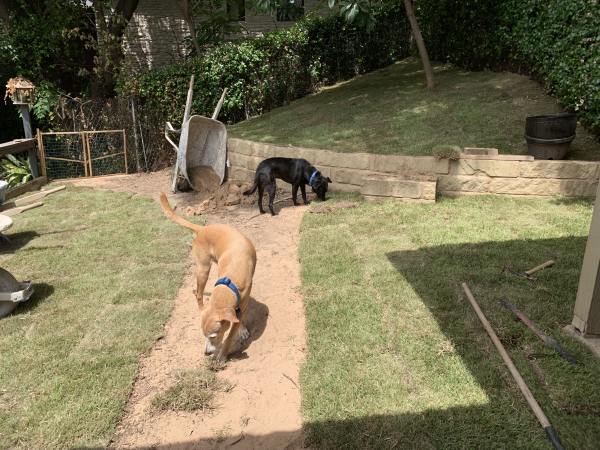
Once done, it was a fine yard for exploring and enjoying, and a lovely loquat tree was rescued from the encroachment, providing just a little shade.
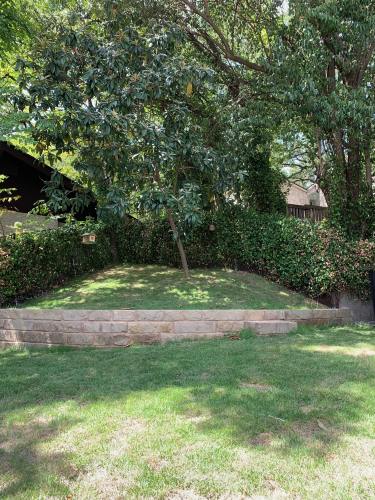
Then, onto the next part of the project. Along the back of the deck, another incredibly steep slope of ivy and trash trees. (Surprise, right?)
More leveling, more retaining walls, more soil and more Zoysia grass. Opening up the trees and adding irrigation made a great, long yard for the boys to run behind the deck all the way down to the side street to watch passersby.
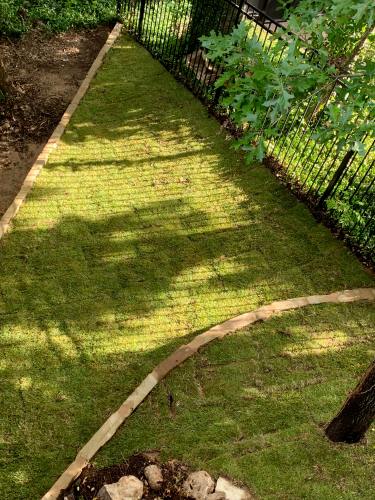
A gate at the bottom gives us some more flexibility and access.
The retaining walls will hopefully keep water from rushing down the hill during the periodic gully washers.
One last dog-friendly project awaited. On a steep hill, the house has catwalks from the driveway and carport to the house. In the space below, the owners had let poor grading and dirt erode the side of the house, so we regraded, took out more volunteer trees, installed a French drain and filled the space with river rock. I had two more gates created so the dogs could run from the back yard and deck to the front next to a courtyard where they watch everyone go by the front yard.
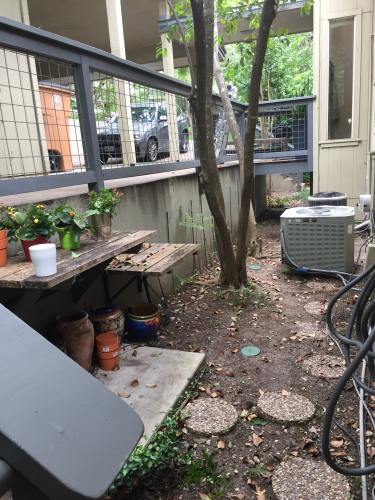
Then it was time to create the first garden bed! Whoo hoo. I was so ready for it by this time. It was the peak of summer and I didn’t have a single flower in the ground on the entire property. I can’t tell you how depressing that was.
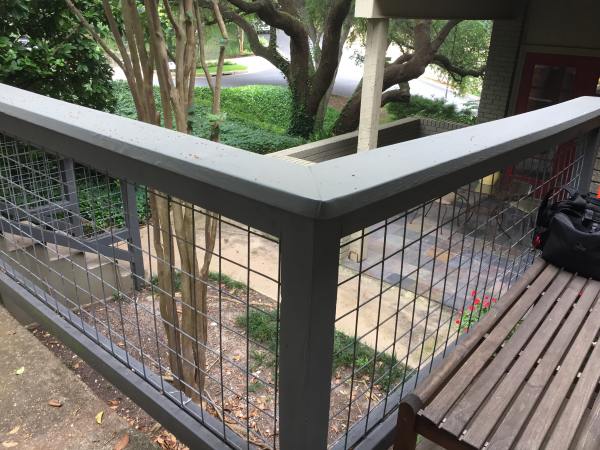
A spindly Crape Myrtle reached so far into the other oaks above the only bare trunks were visible, so we removed that and added an attractive curve to the river rock, building a bed behind it. A spindly Crape Myrtle reached so far into the other oaks above the only bare trunks were visible.
In sad shape, the enormous concrete wall needed attention. Step number 1 – get the bed prepped and find the right plants.
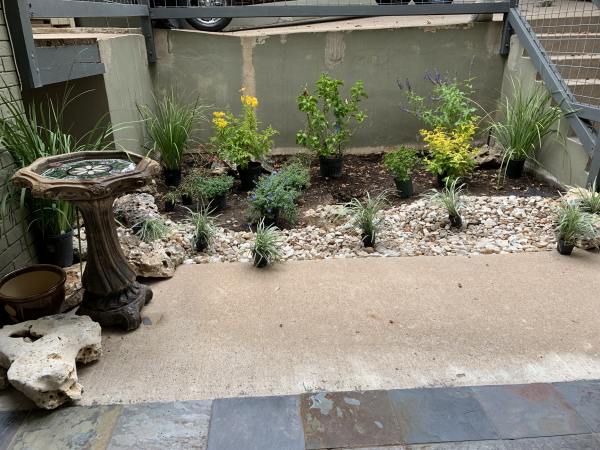
Then came concrete painting. After a good bit of pondering what color would work with the dark sage green of the house, the gray fences and the red doors, I settled on a medium shade of blue.
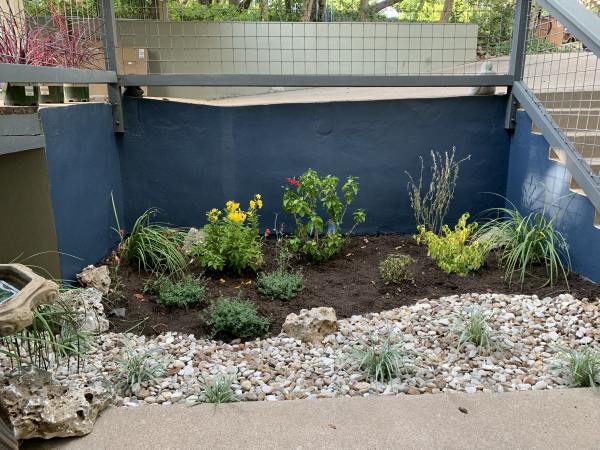
I decided that the iron art I designed was worthy of so much more than an air conditioning screen, so I placed three of the panels as a focal point in front of the blue. Wow, does that pop.
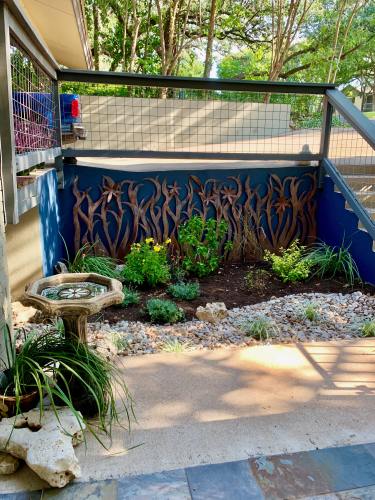
We’re not sure if the large plastic owls mounted all over the property were to keep the local hawk family away from their tiny dog, or to keep birds from pooping on the deck or what. But, for all the trees, there are precious few birds. I put a birdbath on the edge of the courtyard and since we are rarely out there, I’m hoping some nearby feeders and houses serve to invite some feathered friends.
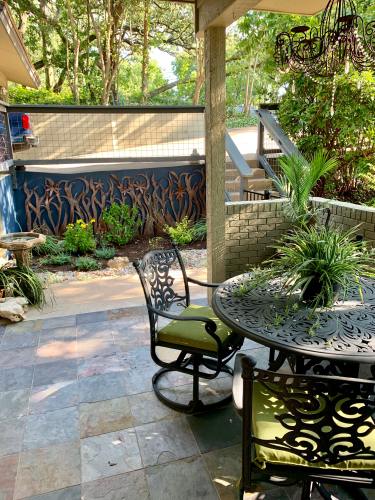
Add a table, more plants and a chandelier and, voila, the perfect spot for morning coffee or afternoon iced tea. It’s starting to feel like home. Once again, I’m able to say I have a “happy place” to sit and relax.
Check back for the next saga of “Save the Garden,” where I’ll walk through the before and after of the two main beds directly in front of the house.

